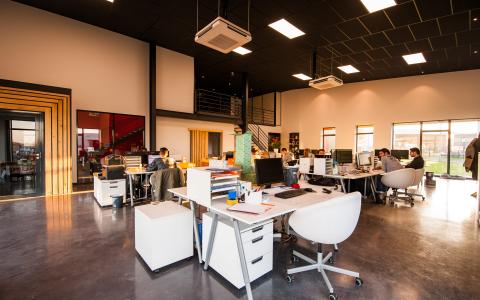
(Fortune) - The DNA of work has changed—or, rather, the point of engagement. A deadly virus sent us scrambling for safety, and jobs that didn’t seem well suited for working from home (WFH) suddenly were happening in just that way—and more successfully than anticipated.
Eventually, returning to the office (RTO) became possible, and many an executive declared that productivity relied on face-to-face interactions. But the workforce has spoken, and sitting in a cubicle for extensive hours five days a week isn’t the way forward.
Battle lines have been drawn between the RTO and WFH camps. Some executives stand on their soapboxes and insist that the creative process happens only over the literal watercooler. Workers say that flexibility is a right and the most productive way forward. Ironically enough, both groups are leaning toward similar policies, with many requiring three days a week in the office and approving two from home. Even the extreme butts-in-seats chief executives often now push for 80% time in, not 100%.
The rhetoric on both sides is fierce, but the paths are remarkably parallel. Hybrid work it is.
As advancements allow for more and more of a human feel in our online interactions, work location may become less relevant. In the meantime, when working remotely, we need to know what our work comprises and what criteria allow us to know whether it’s done well. This is the holy grail. What makes us know that this job, another job, or any job, has been successfully completed?
Lately, we’ve seen a large variety of attempts to make hybrid work work. It turns out we’ve learned a few things about what doesn’t work: It doesn’t work to have employees commute to the office only to find themselves alone, logging into online meetings just as they would from home. It doesn’t work to have some people on-site and others dialing in; the imbalance in being fully part of the conversation is apparent to all. It doesn’t work for leadership to be in the office while technically “allowing” some to work from home: Those who show up will end up being favored, and everyone knows it.
Some jobs, obviously, have to take place in person, but for vast swaths of the employment landscape, remote work is both possible and, often, preferable.
Without measurable outcomes (like a count of sales generated or vehicles repaired), success can feel abstract. Management by walking around has been a reliable crutch. We feel better when we see other people “working hard” while at the same time distrusting that those we can’t see are working at all. We also enjoy the camaraderie of greeting each other and exchanging chitchat between meetings. We take security in what’s familiar. Even the U.S. government is debating an RTO mandate.
Human exchanges aren’t meaningless. Whether it’s online or offline, we absolutely work better with people we know and trust, with whom we’ve developed an easy pattern of interaction. It’s much easier to ask a colleague who feels like a friend for support on a work task. And we do get to know each other better in person. Technology hasn’t yet arrived at the point where human interaction reliably builds relationships (despite the seemingly endless attempts at forced “share something about your weekend” conversations happening before video meetings).
How much of that human connection is really necessary for the job? For the moment, the hybrid work movement seems to have decided that “more than none but not necessarily all five days a week” is a good enough answer.
However, productivity theater doesn’t serve anyone well. The answer is goal-oriented management, job by job. Managers must define what success looks like and be able to recognize when the bar has been met or exceeded. In truth, this has always been the problem. It now also means the nuances of each job must be divided: Which tasks are suitable for remote work? How much co-presence is needed?
Once everyone can agree on the finish line, there is so much freedom to be had. Employees get to feel like they have some control over their work and home lives (and also escape the sometimes toxic office culture felt by many marginalized populations), and managers can cease tracking an employee’s every waking minute online, or insist they sit in the office all day, every day.
Hybrid work isn’t new work, but it requires different strategies for accomplishing the same work under new circumstances.
By Terri R. Kurtzberg
Terri R. Kurtzberg is a professor of management and global business at Rutgers University and is the author of multiple books on how virtual work changes our lives. Mason Ameri is an associate professor of professional practice at Rutgers University whose expertise includes examining the opportunities and disadvantages people with disabilities face in employment.
The opinions expressed in Fortune.com commentary pieces are solely the views of their authors and do not necessarily reflect the opinions and beliefs of Fortune.



